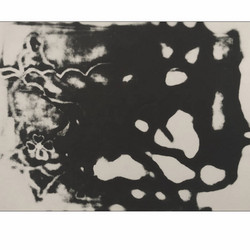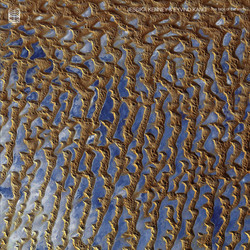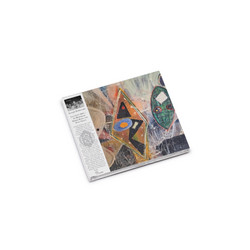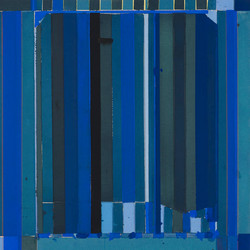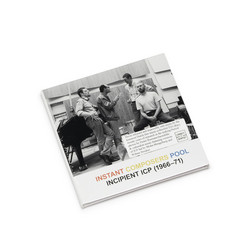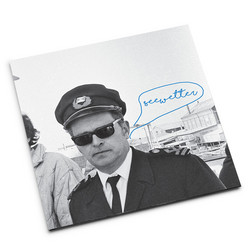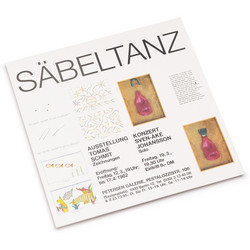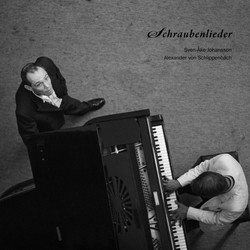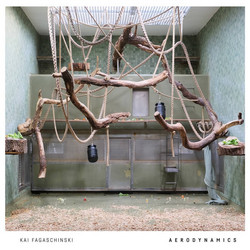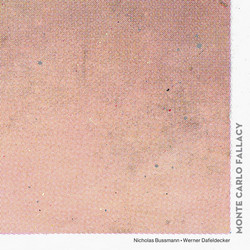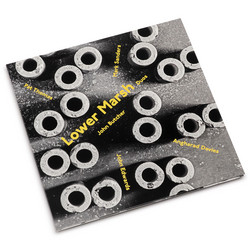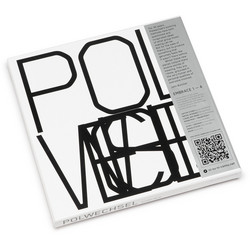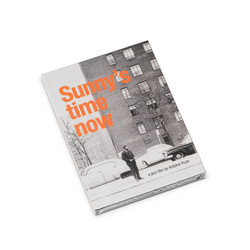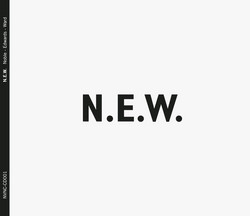Sven-Åke Johansson
Blue for a Moment (9LP Box, Art Edition)
**Last copies available - numbered and signed deluxe edition** A unique collection of historic and recent live recordings that map the many facets in the exceptionally varied musical career of Sven-Åke Johansson from the 1970s to the present day. The seven sessions included here, in total nine LPs, are taken from both historic meetings Ein Abend in Pöseldorf (with Alexander von Schlippenbach) and contemporary solo works and with the likes of Axel Dörner, Rhodri Davis, Rüdiger Carl, and Andrea Neumann. Born in Sweden 1943 Johansson, like Peter Brötzmann (born 1941), was a pioneer in European free jazz of the 1960s. A music very much distinguishable from American free jazz. Indeed, from its inception, European free jazz/free improvisation (and let's include Scandinavian free jazz) plotted a course untethered to that of American music. Johansson took up residence in Germany, and collaborated with Brötzmann, Manfred Schoof, Hans Reichel, and Peter Kowald. He can be heard on the groundbreaking recordings by Brötzmann For Adolpe Sax (BRÖ, 1967) and Machine Gun (BRÖ, 1968), and with the Globe Unity Orchestra. Like other European improvisers, his art was not limited to music. He was (and still is) a Fluxus artist, producing radio plays, theatre, poetry, and music. Always music. His performances have included 12 tractors, metal workers, and fire extinguishers. There has been a kind of rediscovery of Johansson lately. Now living in Berlin, he can be heard on the trio recordings by Neuköllner Modelle with Bertrand Denzler and Joel Grip, Sektion 1-2 (Umlaut, 2016) and Sektion 3-7 (Umlaut 2017), and slowly his recordings with the legendary Bengt Nordstrom, Bobo Stenson, and Per Henrik Wallin are being rereleased. Johansson even makes an appearance on Ken Vandermark's Territtory bands, Otomo Yoshihide's New Jazz Orchestra, Peeping Tom, Die Enttäuschung, and Johansson's Quartett, Quintett, and Ol' Man Rebop Ensemble), Andrea Neumann (Phosphor) a classically trained pianist who performs with just the insides of the piano and with electronics, and Johansson's percussion. The Trio's free improvisations, heard here on two LPs, were recorded in 2013. This is a rejoinder to their efforts from the 1990s that produced Barcelona Series (Hatology, 2001) and Große Gartenbauausstellung (Olof Bright, 2012). What has changed, maybe better stated, ripened, in this more recent recording, is less hesitation between the players. As with any minimalist improvisation, less is (quite often) more. Certainly, but what happens when three humans occupy that Mies van der Rohe construction for a lengthy period? Souvenirs are kept and maybe a familiarity between players allows for one performer to finish another's thought. What is evident here is that the three musicians are quite comfortable making sounds together. Each extends the limitations of their instrument with trumpet growls, percussive snarls, and the twang of strings and metal. If the purpose here is musique mécanique, then the result is a glorious failure. The sounds (I didn't say music) are continually compelling. Burkhard Beins / Rhodri Davies / Sven-Åke Johansson Fallstudien After a thorough search through the AllAboutJazz.com library a request to Mr. Google, I cannot find where these three musicians have performed as a trio before this recording. Johansson recorded <="" em=""> (Eventuell, 2003) with percussionist Burkhard Beins, and Beins and harpist Rhodri Davies perform in the quartet SLW (with Lucio Capece and Toshimaru Nakamura), and the trio The Sealed Knot (with Mark Wastell). Nonetheless, this trio is a natural fit. The instrumentation, percussion/harp/percussion, yields something one might mistake for laptop and percussion excursion. That said, each player is expanding the possibilities of their instruments. The 18-minute "For Harp And Percussion" can sound as if a jet engine is being fired or a storm has blown apart a sheet metal factory. The players are fond of juxtaposing the machine noise with the near silence of still chimes. Of the three pieces heard here, this track shows the most range. Davies' solo piece "For Harp, Black Beans, Rice, Red Lentils And Gunpowder Tea" (as pictured on the LP) plays with the sound made when the above mentioned items are applied to his harp. He can make it sound like a Japanese koto or a summer's rain storm. It is easy to imagine these are the sounds heard inside an hourglass. The shortest piece, "For Percussion," bangs and roils a swirling turbulence of scrapes and pulled/bowed strings. If sound can also be visual, this definitely is.
Sven-Åke Johansson Orchestra
Das Marschorchester
As the classic Monty Python series proclaimed, "and now for something completely different." Indeed. Sven-Åke Johansson assembles a fourteen-piece band to cover classic marches, and does so without a hint of irony. Except, of course, they don't actually march. Nonetheless, listening to these twelve classic pieces makes you want to walk in a military manner with a regular measured tread, i.e. march (minus the military implications, of course).
Beyond the obvious smile material, there's history here. New Orleans musicians created jass from these marches some 125 years ago. As long as the second line parade was performing a march and they had you moving, why not also make you shake your ass. Johansson applies the shake, the shiver, and plenty of shudder to these marches. It is probably the closest he comes to the philosophy of his brethren Han Bennink and the ICP Orchestra.
The music is joyous and triumphant in the naive manner marches were intended. Johansson and his cast, we have Rüdiger Carl on clarinet and Alexander von Schlippenbach trading his piano for trumpet, wiggle a few wink and nod mawkish notes on the edges to let us know they are beating their swords into plowshares, and their spears into pruninghooks.
Liz Allbee / Annette Krebs / Sven-Åke Johansson
Frost
If you seek the ineffable, then maybe free improvisation is your thing. If not, you may perceive it, and its instant creation, to be without meter and rhythm. Those two elements either define you as an adventurist or a listener who requires some structure. In other words, you want your surprises to be a bit predictable. Frost by Liz Allbee, Annette Krebs, and Sven-Åke Johansson is that beyond description performance. One that finds fascinating rhythm in its (un)pulse. Or maybe better stated, in its new-pulse.
Johansson, American-born Berlin resident trumperer Liz Allbee, and German guitarist Annette Krebs create the musical equivalent of James Joyce's Ulysses. By that I mean, everything happens here on one day -one recording session, yet the experience is immense. Although, Krebs and Johansson released the duo Peashot (Olof Bright, 2011), this appears to be the first occasion the three have worked together. As Berliners, these musicians certainly travel the same circuit and are quite comfortable performing together here.
In the hands of Allbee, the trumpet is a wind machine or a train whistle. She can turn an acoustic instrument into a machine. Likewise, Krebs' electronics and guitar often appear as a ghostly chimera, haunting the ticks, rubs, and sandpaper sounds of Johansson. Our hero often attempts to jettison rhythm here, but it leaks out of the crevices of his performance.
Alexander von Schlippenbach / Sven-Åke Johansson
Ein Abend in Pöseldorf
The historical document in this LP boxset is Ein Abend in Pöseldorf (An evening in Pöseldorf). Recorded in March 1978, this previously unreleased session follows the now out-of-print LP Kung Bore (FMP, 1978), as well as the subsequent and now long out-of-print FMP titles Live At The Quartier Latin (1976), Drive (1981), Kalfaktor A. Falke Und Andere Lieder (1983), and Blind Aber Hungrig—Norddeutsche Gesänge (1986). The significance here is that we can grasp the development of both musicians and their concepts.
The pair had made a connection in Paris 1964, and collaborated as a duo beginning in 1974. Besides their duo sessions, they can be heard on Peter Brötzmann's 1979 Up And Down The Lion (Olof Bright, 2012) and also on the small wonder of a boxset Night And Day Plays Them All (Edition Artelier Graz, 2003) playing 156 standards with bassist Jay Oliver and saxophonist Rüdiger Carl.
The three tracks totaling 35 minutes evidence Schlippenbach and Johansson registering, then discarding, the music of Cecil Taylor and Sunny Murray. The pianist shows early indications of his predilection for Thelonious Monk's angularity, and Johansson agrees to be the motor on the opener "Opfsteinpflaster (Muster)," after he switches from accordion to his drum kit. The highlight here may be ..." Abends Geht Man Gern An Die Luft." The pair trace a melody from bare bones to a nonsense sung chorus over accordion into a political rally of percussion. Thus a new genre is born, free vaudeville.
Sven-Åke Johansson
Hudson Songs
Alone at a piano, Sven-Åke Johansson is all-at-once, a poet, a tone generator, a percussionist, and an encrypting vocoder. His performance here from 2007 proffers his stories spoken/sung in English. That last point is important; his presentation is not in his native language, nor his adopted tongue of German, but in a more conscious (for him) language. What we hear is a clear pronunciation of the words, often nonsense or found poetry. Johansson's delivery causes the listener to alternately focus between sound and meaning. Here meaning can be both literal and aural.
The closest comparison here is the music of Alessandro Bosetti, an Italian artist also living in Berlin. Both artists walk the line between cacophony and euphony. The best example is "The Ant-Eater's Visit," an animal fairy tale that might be identified as a Kenneth Patchen story. As the ant-eater pokes his way into the ant hill, the ants discuss the possibilities of a sell-out before deciding to defend their homeland. Sure, it's quite silly, but also compulsively entertaining.
Sven-Åke Johansson
Lind
Any retrospective of Sven-Åke Johansson's music requires a solo performance. Lind, recorded in 2010, some 38 years after his self-produced free jazz solo recording Schlingerland (Atavistic/Unheard Music Series, 2000), doesn't so much revisit Schlingerland as it directs a micro view on his previous macro work.
These fifteen, all very brief, snapshots of Johansson display his arsenal of technique. He can swing as he has on his reinventions of jazz standards or, as he does here, coax extraordinary sounds from his very simple kit. He plays with pitch on "Lindgren," scraping drumstick across cymbals in a most delicate manner. Then there's the tortured anguish of "Lindholm," performed as sort of an exorcism of sound. In between, we get the hippest swing on "Lindsjö," mastered with brushes and bass drum, a succession of nonpareil drum rolls on "Lindrot," and a meditative cymbal symphony "Lindman." As an artist, he works in a painterly manner focusing on color and texture rather than time. This must be attributed to his contributions to the minimalist improvisation movement of Berlin in the 1990s. It might be easier to revel in the roar of early free jazz, but Johansson succeeds in going deeper with an often quieter, insightful approach.






